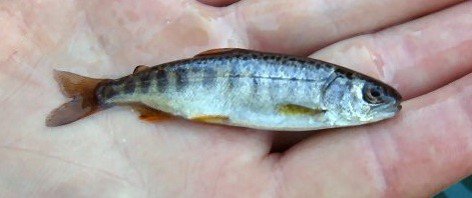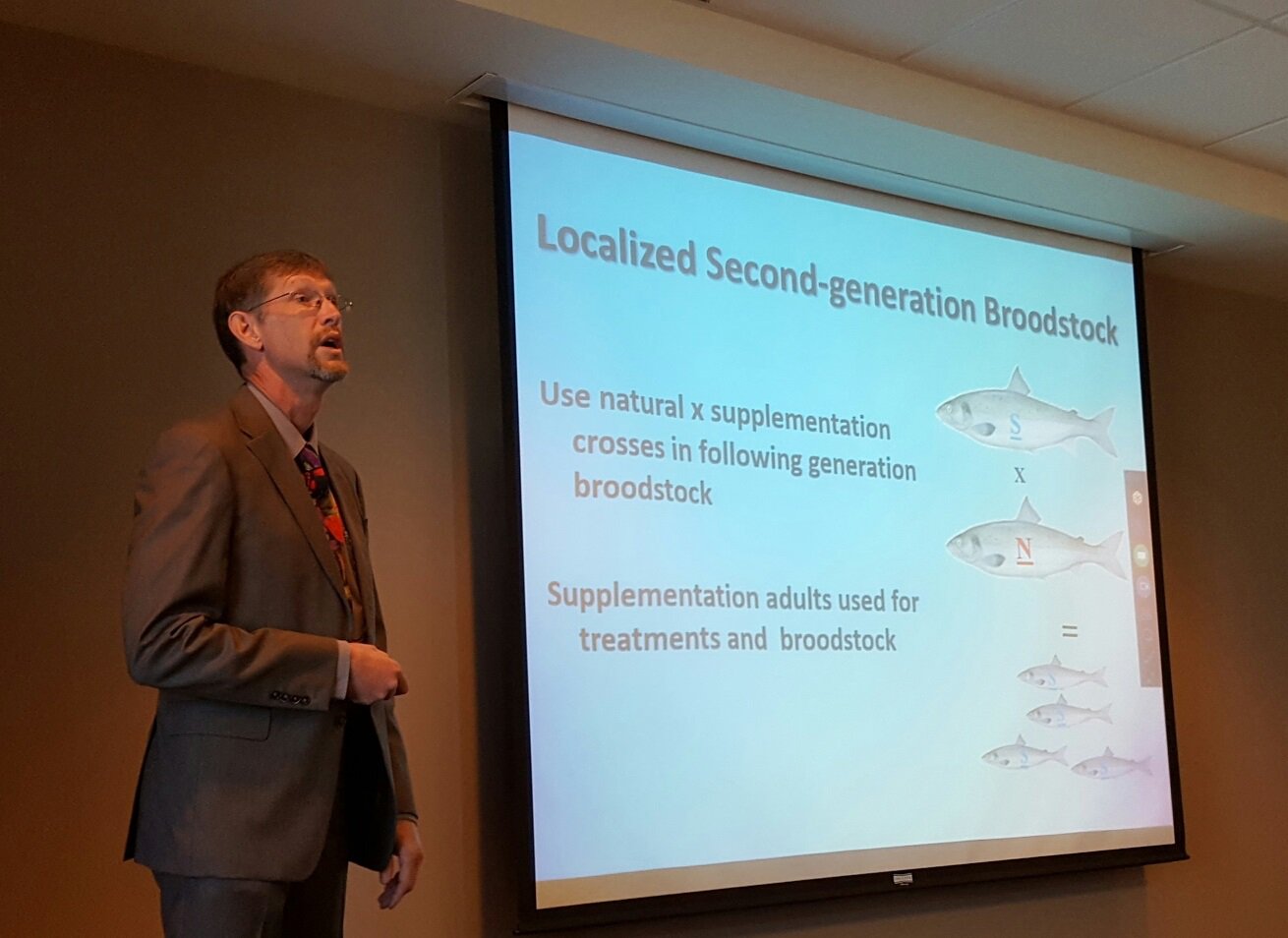Hatcheries and Wild Salmon: Results From Nearly 30 Years of Study
Researchers in Idaho find hatcheries can help stabilize a declining salmon population, but not permanently.
- May 10, 2016
- John Harrison

A unique, 27-year experiment with releasing hatchery-bred spring Chinook salmon to rebuild runs that spawn in the wild ends this year with promising results.
“When we started this, in 1989, we wanted to learn whether hatcheries are part of the problem for wild fish or are they part of the solution?” said Timothy Copeland, coordinator of the Wild Salmon and Steelhead Monitoring Program for Idaho Fish & Game. Copeland reported to the Council this week at a meeting in Boise. “We wondered whether hatcheries could increase the number of wild fish without reducing their ability to make a living out there in the wild.”

Dr. Copeland explains the results of the Idaho Supplementation Studies to the Council.
The answer, he said, appears to be that supplementation provides short-term benefits at low cost, but as abundance increases just putting more fish over a weir and into a spawning stream is not enough because, he said, “the fish don’t really spread out.” Better, he said, to find good but underused habitat and put fish there when conditions are good.
Research suggested that the practice known as supplementation is a useful technique to maintain fish populations in the face of poor environmental conditions. However, the benefit in terms of fish population growth in the Idaho rivers was temporary, and supplementation should not be seen as a panacea to overcome other factors that affect fish survival, such as poor habitat and river migration conditions and the effects of the variable ocean environment, Copeland said. Supplementation is a way to buy time until naturally spawning fish populations rebuild on their own.
The Idaho Supplementation Studies project, which ends this year after intensive research on several generations of fish, focused on the Clearwater and Salmon river basins and was carried out by the Idaho Department of Fish and Game, the Nez Perce and Shoshone-Bannock tribes, and the U.S. Fish and Wildlife Service.
Among the other conclusions from the Idaho studies:
- Fish productivity declined as the ratio of hatchery fish released into the wild increased
- Population increases are more effectively generated by increasing the number of natural-origin fish that spawn in the wild than by increasing releases of hatchery-bred fish
- Results show the wisdom of using a stock integrated with the target population to supplement it.
- When demographic risk to natural populations is low, other approaches besides placing adult fish over weirs may be more effective at increasing the population, such as transporting fish to vacant spawning habitats.



